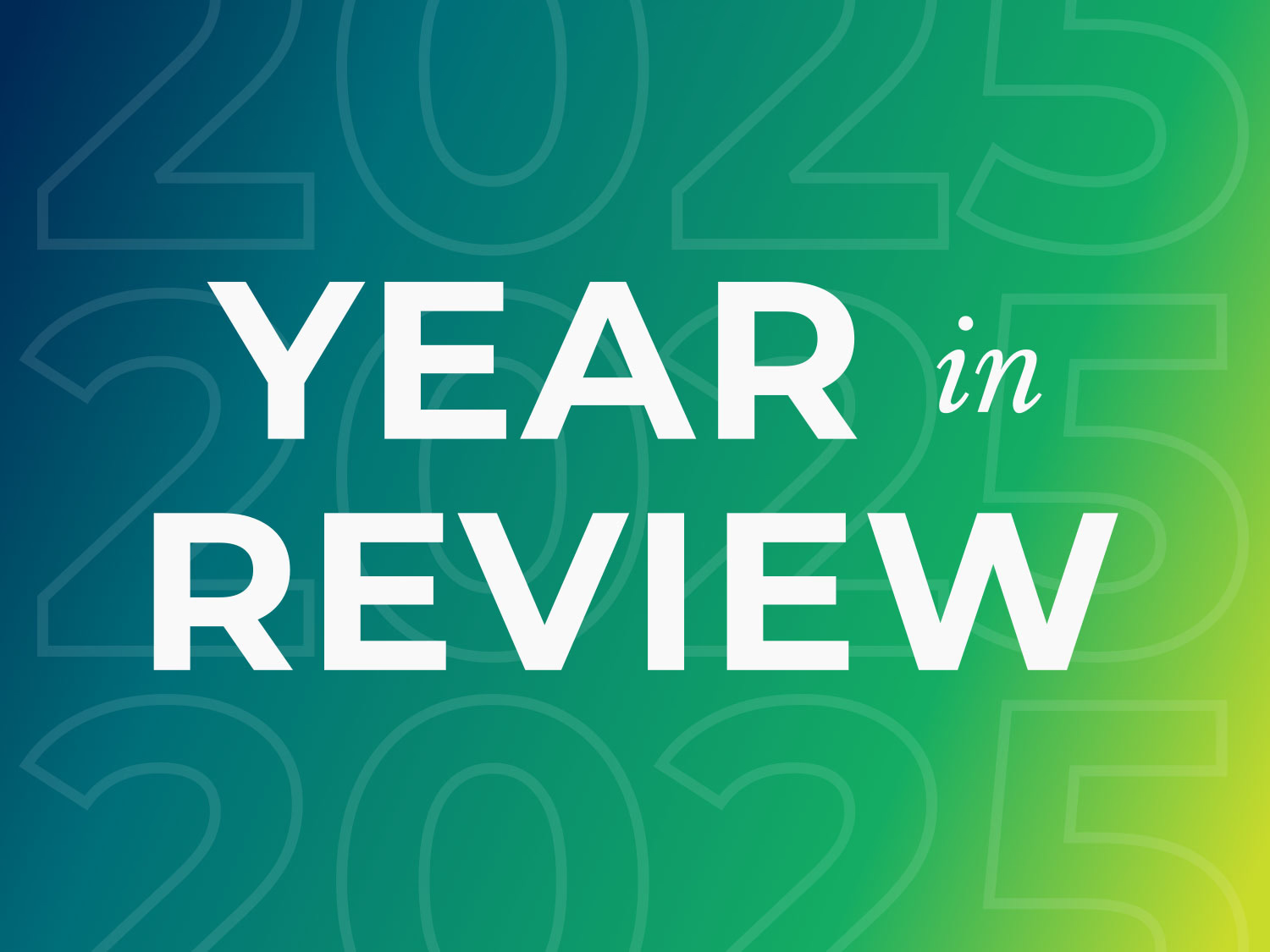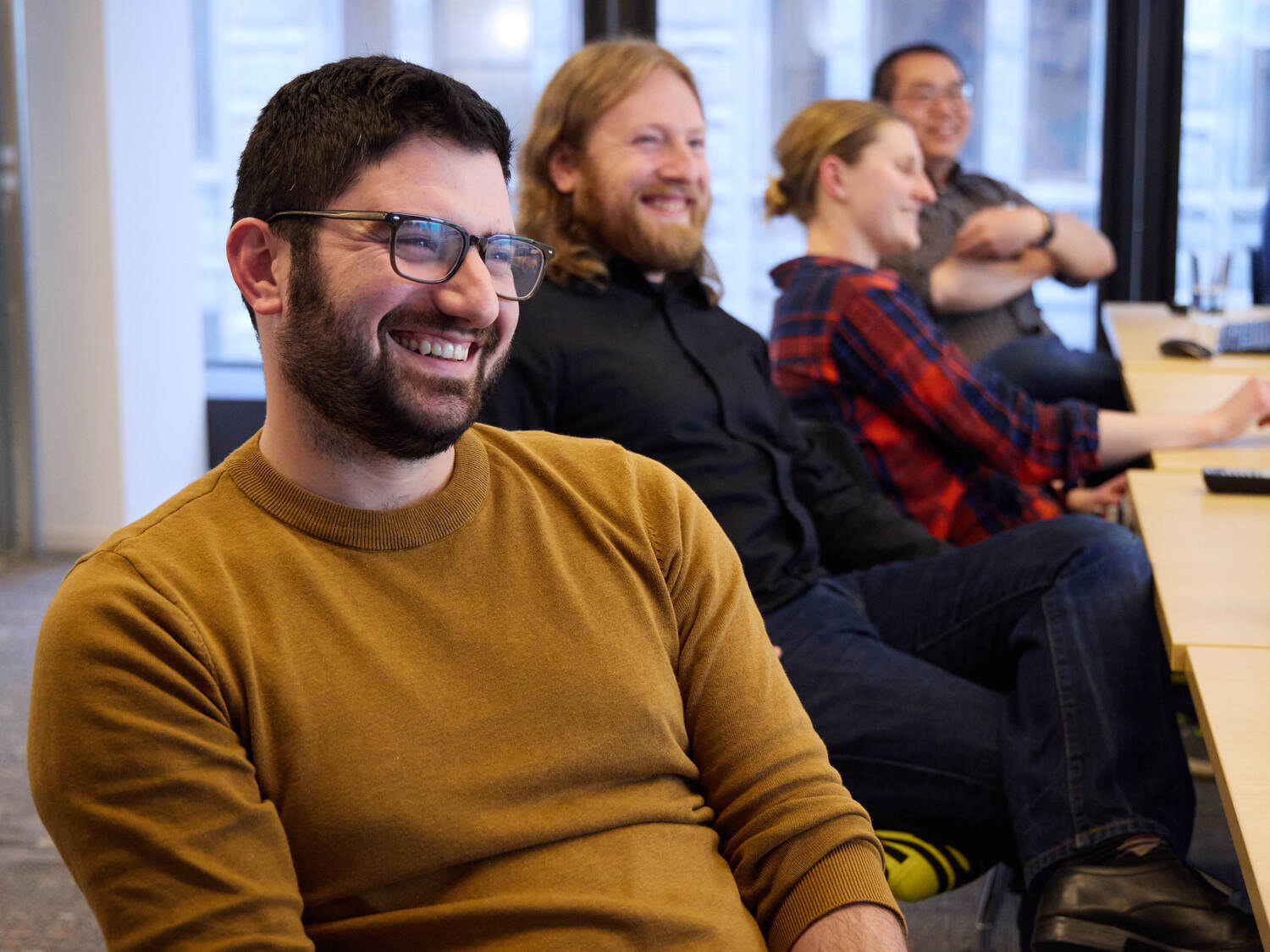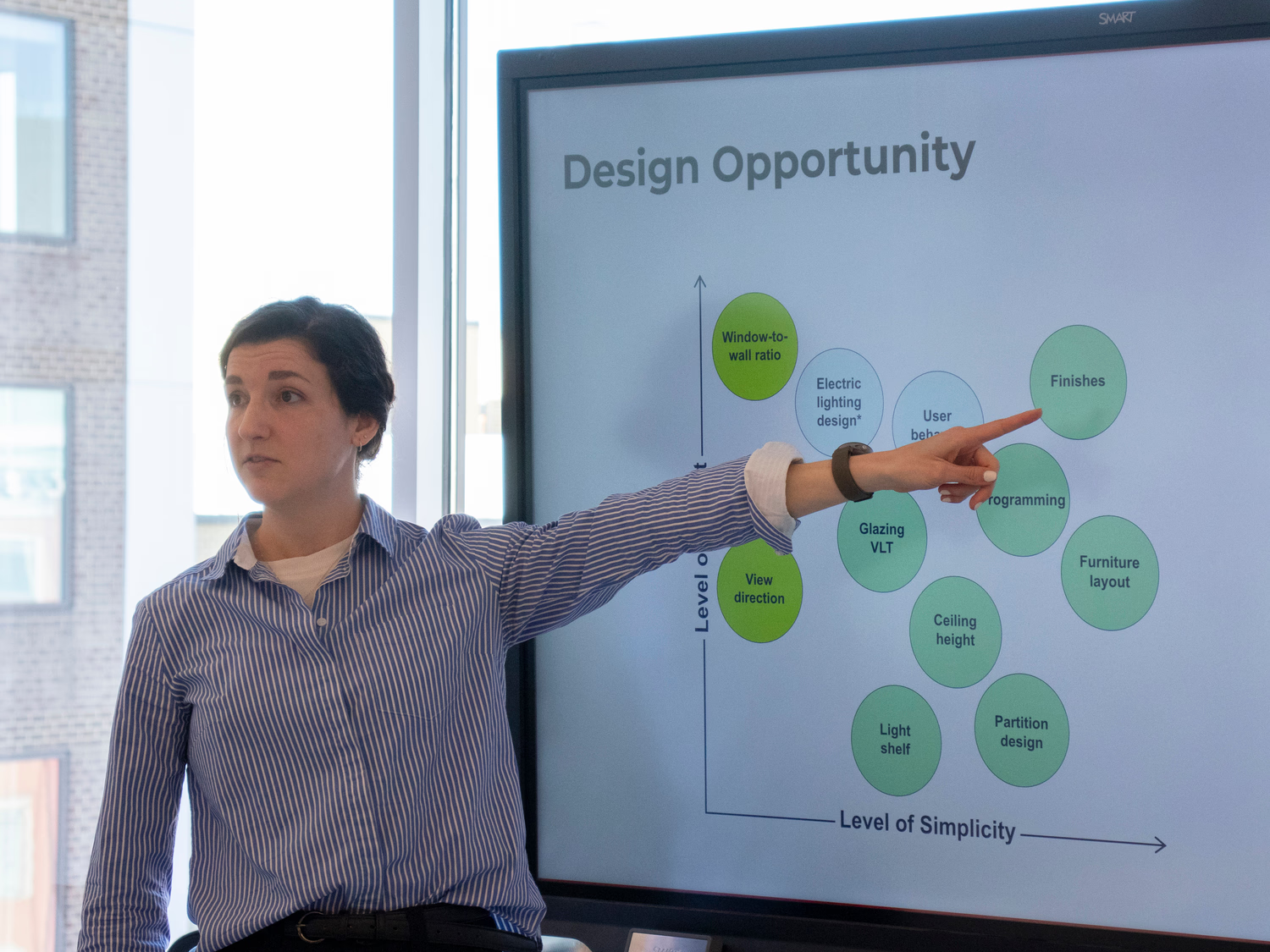I’ve never had a career path. It’s always felt like more of a career meandering—experiences that on the surface may not have seemed related, but I knew that they were connected…somehow. It’s never been linear, and never mapped clearly to a progression of job titles.
In fact, I had essentially the same job title—including roles and responsibilities that on paper didn’t change—for almost 15 years. But I knew that I had grown. I knew I was acquiring new skills, gaining influence, and advancing in the organization. That said, it wasn’t always easy or comfortable to live with that ambiguity. Because my growth didn’t look like a traditional career path, many times I asked myself, and my managers, “where am I going?” and “what’s next?”
We've mistakenly conflated career development with promotions and moves.
Julie Winkle Giulioni, Career 2022: What Does It Mean?
Today, I work for Quinn Evans as the Team Development Director, and one of my primary responsibilities is to help our staff grow and develop, and, perhaps most importantly, to make their growth visible and valuable both to them as individuals and to the firm as a whole.
The more conversations I had with our staff, the more evident my challenge became. My colleagues wanted to feel what can only be described as “movement” in their career. The scale of this movement varied person to person, but there were very few who were content to stay in the same place doing the same thing year after year. At the same time, we didn’t have endless job titles to mark every shift in contribution to the firm and we never would—even if we could.
Not just our business—all business
It's not just the staff in our firm clamoring for this. It’s not even just our industry; it’s everywhere across the business landscape. Businesses are struggling to create a career trajectory that focuses on experience and demonstrated skill more than requirements for a certain length of time with specific titles. Lani Basa, Owner and Co-Founder of The BWC, confirmed the widespread nature of this issue from her perspective working with dozens of small and growing businesses, saying “My clients are in growth mode—hiring and creating agile teams. Traditionally, their teams were “flat” in structure and there aren’t clear career paths as the organization is continually evolving.”
After years of employees following prescribed career paths in organizations striving, position by position, to prove they had the specific skills and influence to move up on the promotional ladder, a concept called “career portfolios” has evolved. Much like a creative portfolio demonstrates an artist’s talent and skills, a career portfolio is a collection of experiences that speak to an individual’s strengths, accomplishments, interests, etc. It showcases the entirety of a professional journey. It's a great concept, but not necessarily an easy one to accomplish.
Organizations are stuck in the old career path mindset, which often seems to require moving from job to job or company to company to collect the skills and experiences needed to create a portfolio. As Julie Winkle Giulioni calls out in her article Career 2022: What Does it Mean?, “We’ve mistakenly conflated career development with promotions and moves.” All of which makes it harder for companies to attract and retain talent.
We know that the average employee entering the workforce today will change jobs an average of 12 times over the course of their lifetime. And there’s plenty of evidence to support that one of the causes for these many changes is the lack of growth opportunities with an organization. As noted in a Workplace Intelligence study on Upskilling:
"Of those surveyed, around 2 out of 3 employees said it’s “extremely” or “somewhat” likely they’ll leave their employer within the next year because there aren’t enough opportunities for skills development (64%) or career advancement (66%), or because there’s no way for them to transition to a different job or a new career path (65%). Notably, Gen Z and Millennial employees were more likely to say they’ll jump ship: 74% are ready to move on due to subpar skills-building support or a lack of career mobility options."
By 2025, Millennials will make up 39% of the workforce, with Gen Z coming in at 23%. By 2030, Millennials will be 70% of the workforce—this is a challenge across all industries that cannot be ignored.
But what if you could build your portfolio while staying in your organization? What if your development plans and tools were focused around building your portfolio in the company you are already in?
Thinking Differently
We need to think about career-pathing differently. Or, more boldly, drop the whole concept for good.
The old-school career path ladder doesn’t work anymore. Internally, it prevents current employees with potential and capability from finding a place where they can thrive. Externally, it exacerbates the already rampant problem of finding enough people to fill needed positions by putting in even more barriers in the hiring process.
We need to think about career-pathing differently. Or, more boldly, drop the whole concept for good. Perhaps we’re not quite at the point of the “no more jobs” conversation, which has a certain appeal, if not practicality. But we need to be a little less rigid, a little more flexible, and a lot more creative in how we go forward.
Lucky for me, Quinn Evans is a firm that's willing to be a maverick, leading versus doing things the way they’ve always been done—in architectural firms or otherwise. Instead, we focus on three “Big Ideas”—core principles—that drive every aspect of our business:
- Put People First
- Embrace Complexity
- Take the Long View
These three principles set the stage for our new way of thinking about career development within the firm.
Designing a New Model
As we looked at solutions, we defined four core objectives. The model needed to:
- Be inclusive and apply to everyone in the firm.
- Highlight diverse ways of working that can contribute to team success and personal growth.
- Allow flexibility to customize, adjust, and change direction over time.
- Provide a sense of movement that is not linked to titles or hierarchy.

We started with the concept of mastering and broadening as the two main axes of our model. In every job assignment, role, or even as a result of our own natural tendencies, we may stretch ourselves either in a direction that further refines the skills and knowledge we already have—mastering—or expands what we’re able to do or understand—broadening.
As I explored other talent development tools, I discovered various 9-Box models. Most of the 9-box models measure potential and performance, which wasn’t quite right, but the sense of progression and the indication of differences in skill development the 9-box offered was intriguing.
The solution: Merge the two concepts together.
The result was our Career Navigator model. Each diamond in the model represents a “skill set.” It is not a title or a label, but having a name for the skillset provides a sense of accomplishment and generates motivation to continue to grow. Each of the skill sets comes with definitions. For example:
- Explorer—An Explorer experiments and tries new things to discover their interests and talents.
- Connector—A Connector thinks innovatively about concepts, ideas, techniques, processes, and knowledge, and how to apply them to their work—individually or in new combinations in collaboration with others.
- Capacity Builder—A Capacity Builder optimizes their ability to deliver work with a high degree of quality, efficiency, and teamwork.
The model allows staff to:
- Create a unique progression that can, and likely will, change over time, within the context of work at Quinn Evans.
- Visualize current and alternative approaches to working based on interests, team needs, and opportunities to refine and master skills, knowledge, and new possibilities for collaboration.
Putting the Model to Work
The idea that you can work on skills and try experiences throughout the organization as part of your development helps create cross-functional bonds, break down silos and grow a more resilient team.
Our first official use of the Career Navigator model came this summer as part of our yearly review cycle. We asked for volunteers to pilot the model—both to ensure it did everything we were hoping it would, and to invite our staff to help inform how we apply it in the future. The results have been overwhelmingly positive. And what started as a small volunteer group has grown as word has spread. One of our early-career staff members who worked though the Career Navigator as a follow-up to her review said:
“The Career Navigator helped my manager and I clarify where my current experience and contributions aligned. As we started to identify goals, the Navigator helped illustrate that I have two main interests for paths forward. The Career Navigator made it clear that I need to prioritize which interests to move forward first, and which interests might develop on a longer timeline. It is a great tool to get feedback from my manager about where my efforts could be most valuable to the firm.”
Another, more senior staff member said:
“As someone who is further into my career but at a pivotal crossroads, the Career Navigator tool helped me to reflect on my trajectory—both behind and in front of me—and offered practical language that can help me influence my own leadership path with more intention and confidence.”
The next step will be a firm-wide roll out of the Career Navigator which will deepen the conversations with the idea of revisiting the model yearly as a part of development planning. We will also explore applications in other industries. Lani Basa has contributed to the development of the Career Navigator model and its application after hearing from many clients and reading publications that discuss the issue but offer few ideas on how to actually address the need:
“The Career Navigator is a tool that can help my clients develop rich conversations and development plans for their employees. It focuses on the employee as a unique individual who not only brings their talents to the organization but recognizes that there are many more opportunities to grow in a small business that don’t require a specific promotional path or job title change.
It gives the employee the ability to truly create a ’career portfolio.’ Plus, the idea that you can work on skills and try experiences throughout the organization as part of your development helps create cross-functional bonds, break down silos and grow a more resilient team.”
Moving Forward
Today’s workforce has many choices when it comes to where and who they work for. And unlike past generations, they will leave to find a better company, better opportunity, or a better choice for them.
As Gartner points out in their “Human Deal Framework,” employees want a work experience that sees them as a whole person, not just an employee. They want to know that they are valued, invested in, and part of a shared purpose in the work that they do.
Instead of the adage of 'Promote until failure', employees will have additional pathways for growth that align with their career desires.
Our old development models that focused on the job descriptions and not the person no longer work for the talent we have and want to attract into our organizations. We must help our employees build their career portfolios without having to go anywhere else.
Perhaps one of our mid-career pilot participants said it best:
“The Career Navigator provides a new framework for thinking about creating a path that is unique to each employee’s interests. The recognition that most organizations are more nuanced than a straight hierarchy provides more opportunities for employees to be autonomous and move into areas where they are most likely to thrive. Instead of the adage of 'Promote until failure’, employees will have additional pathways for growth that align with their career desires.”

.avif)





